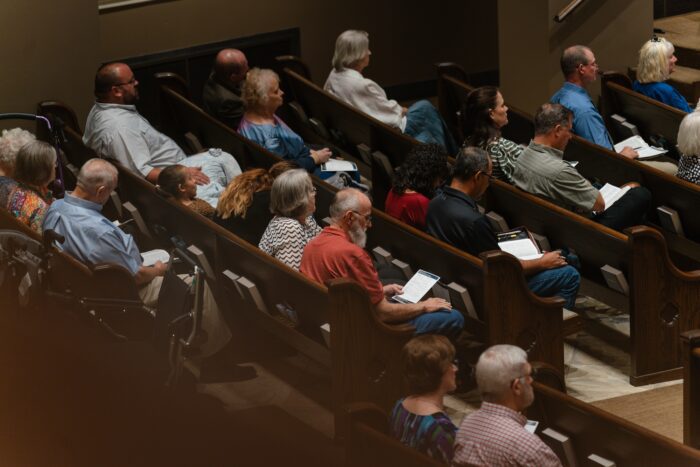Editor’s note: This year marks the centennial anniversaries of the Cooperative Program’s creation, the adoption of the Baptist Faith & Message, and the SBC’s ownership of Southwestern Seminary. To celebrate these 100 years of Southern Baptist cooperation, Southwestern has compiled eleven essays from key Southern Baptist leaders and seminary faculty for an original series on the ETC blog. The entire series, which will publish over the course of eleven weeks, will be available here.
The phrase, “in friendly cooperation,” has elbowed its way into the conversations of Southern Baptists in the last five years. While our discussions have focused largely on defining boundaries and clarifying structures as they relate to the Southern Baptist Convention’s faith and practice, a more pressing dialogue must be had between pastors and church leaders to evaluate the friendly cooperation within the local church. In other words, do we understand the significance of partnering together as a local body of believers?
The New Testament word church (ecclesia) refers mostly to a local, accountable, assembly of identifiable, called-out believers. Yet, in our day, the church of Me seems to be stifling the church of We. Many people bounce from church to church based on a complex list of needs and desires as they look for the best kids ministry, music style, dress code, or communication gifts of a preacher. Church selection and involvement frequently devolve into consumeristic, individual preferences akin to the way people choose their favorite burger restaurants, insurance brokers, and car dealers.
It is high time we take back our collective identity as the people of God. This shows up in our biblical understanding of church as a partnership of fellowship, accountability, doctrine, and mission. It is seen in the tear-stained faces of deacons at the bedside of dying friends, recognized in oil-stained neckties of men washing pans after a pot-luck dinner, the calloused knees of praying moms, and, of course, in the partnership of sacrificing our best and brightest to the hardest-to-reach places on the planet.
The Bible prefers us thinking about church as a We. Vivid, biblical metaphors reveal church as a temple, a building, a flock, a garden, a city, and a body. Our individualistic tendencies are at odds with how the Bible shapes our understanding as the people of God. An associated word is fellowship (koinonia). This word means more than the chit-chat about the big game before the Sunday school lesson. The root of the word is, koinos, or, “common.” Koinonia bears witness to what we share in common as believers, which is nothing less than shared union in Christ and the full participation of both His blessings and benefits. True koinonia, or “common-unity”, is both subjective and objective. It is subjective in that believers carry with them a personal awareness of sharing in a larger sense of belonging with God’s people. Yet, it is also objective in that it calls believers to bear public witness to portray their shared union in the Gospel with each other. This objective reality requires us to consider three crucial questions to evaluate our friendly cooperation with one another.
The first question is, “Who are we?” Church is not just an event we attend. Church is a family to which we belong. We can help our people answer this first question by focusing on three shared behaviors. First, we must foster a sense of communal identity, that stems from teaching and modeling a high ecclesiology. We cannot expect our people to understand who we are unless there is teaching to help form a doctrinal awareness of who the Bible calls us to be. We must cast a joyful vision as a family of disciples. Second, we should emphasize the communal role of the ordinances; the Lord’s supper and believer’s baptism. These symbolic acts are cross-shaped in their essence. Vertically, they symbolize our union with the triune God. Horizontally, however, they symbolize our full participation in the body of Christ. To eat the supper “in an unworthy way” (1 Cor. 11:27) is to take it in a way that does not demonstrate our common-unity in Christ. Likewise, baptism is a symbol, not only of death to self and life in Christ, but death to self and life into the body of Christ (1 Cor. 12:13). We would do well to teach our people that the ordinances are both about me and we. Third, we should consider how we can utilize biblical application to the body as a whole. The majority of the New Testament imperatives are written in second person plural, meaning that they are directed at a group of people rather than a single individual. This is not to suggest that individuals do not also need to apply the text. But pastors should consider having at least one sermon application point each week that seeks to apply the biblical text to the church, as a church.
The second question we must answer is “What do we do?” In Luke 5:1-11, Jesus displays His creative power by helping Simon Peter and his associates drag in a huge catch of fish. The text tells us that in response to the great haul, they signal to partners in another boat to come and help them. This collaboration of two boats towing in the fruit of Jesus’ work is a helpful analogy for the local church to participate together in the work and ministry of the Gospel.
Scripture discloses a panoply of admonitions for cooperation in the body of Christ. A brief survey includes activities such as partnering in service, disciple-making, financial generosity, sending, and the planting of new churches. Believers are called to exhibit Christ’s love by practicing the sixty or so “one another’s” in the New Testament, such as forgiving one another, encouraging one another, and bearing one another’s burdens. Moreover, church members are called to manifest their Spirit-given gifts for the common good (1 Cor. 12:7). Christians are called to accept one another and practice hospitality as co-heirs in Christ’s Kingdom. It was Barnabas who displayed these attributes so well as he risked his own reputation (and potential safety) to welcome Saul of Tarsus into the disciples’ fold (Acts 9:26-28). To be “in friendly cooperation” means that we have a sense of true belonging, as one with another in the family of God.
The third and final question as it relates to our cooperation is, “How do we go?” This highlights the missional nature of our collective calling as a local church. At first glance this question seems divorced from the nature of church fellowship. Many see koinonia as activity with insiders and mission as activity with outsiders. Yet, a closer look shows us that the mission is dependent upon the local church’s partnership and common-unity. In His high priestly prayer, Jesus prays that His disciples “would be one … so that the world may believe you sent me” (John 17:21). Jesus’ prayer suggests that unity undergirds mission. The church is not called to be unified for the sake of unity. Rather, the church’s unity serves the larger role of its mission to take the Gospel to neighbors and nations.
Practically, this implies that the evangelistic fervor of the local church is tied inextricably to the way it views itself as a people. The Great Commission is best served when a local church endeavors to pursue it together through actions such as collecting funds to send to the Cooperative Program, partnering members for evangelism, sending mission teams to serve, creating care teams who will love and serve missionaries serving on the field, and praying in groups for the salvation of unsaved neighbors and family members. The local church is God’s primary agent for advancing His global mission and we can be and do more, when we pursue it together.
Collectively, these principles of local church cooperation help to remind believers that it takes the church of We for individual believers to faithfully serve Christ and to fulfill God’s mission for His church.








